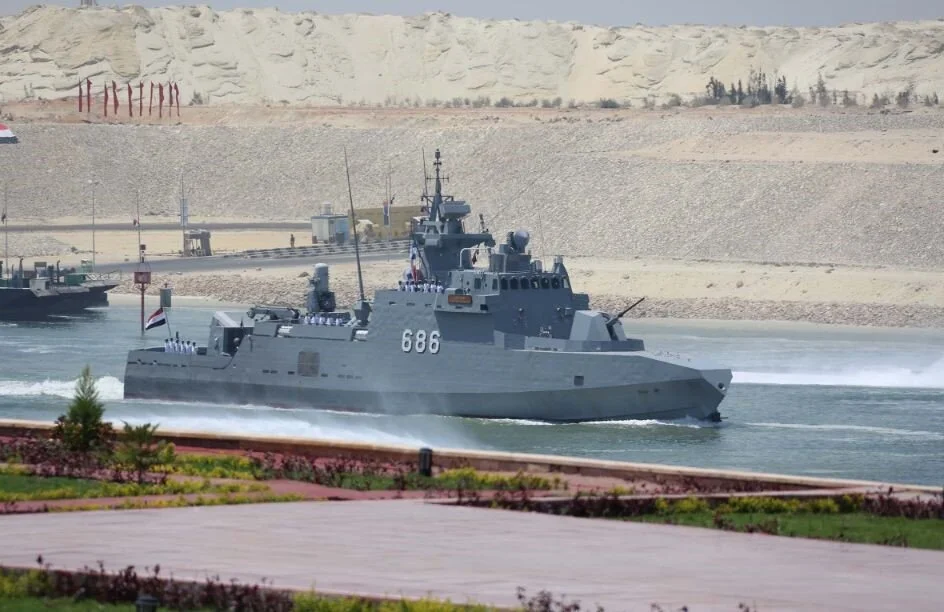Security or volatility? Grey hulls and gas carriers mark Egypt’s return
3 August 2021
Egypt’s navy is undergoing a thorough modernisation process, accompanied by a marked increase in its naval capabilities - all in line with Egypt’s goal to project power on both its maritime flanks.
By Kais Makhlouf, MENA Analyst
Egypt’s navy is undergoing a thorough modernisation process, accompanied by a marked increase in its naval capabilities. In recent years, Egypt has acquired more than a few modern vessels, including French-Italian FREMMs, increased its maritime presence in both the Red Sea and the Mediterranean and engaged in large scale exercises with its partners. Egypt has inaugurated its new 3rd July naval base on the Mediterranean, close to the Libyan border, only a few years after opening its Berenice base on the Red Sea. At the same time, it has engaged in technology transfer to develop its native naval industrial capacity.
This is in line with Egypt’s goal to project power on both its maritime flanks. While such an ambition had already been formulated in years past, it comes at a time of heightened awareness among Eastern Mediterranean decisionmakers of the necessity of power projection at sea. Civilian leaders, and no longer only military figures, are expecting to compete for offshore resources in the Mediterranean.
Large gas reserves have been identified north of Egypt, around Cyprus and close to the Levantine coasts, placing several of them in contested waters. The extraction of some of these reserves is yet hypothetical, but it appears evident to most regional actors that any hope of developing these offshore resources will entail a muscular navy, able to assert their respective claims. The lack of precise maritime borders or binding legal conventions to define common rules in the region means that force or the threat of its use are made all the more likely.
Egypt had already restarted export operations at its two LNG terminals in Damietta and Idku in 2021, returning it to its former status of gas exporter. In 2021, the country issued tenders to improve its access to deep water reserves and launch exploration projects in the Mediterranean as well as the Red Sea.
There are, of course, other reasons for Egypt’s naval rearmament, which is not a trend unique to the region. However, it fits into a pattern of escalating securitisation of the Eastern Mediterranean. Other regional players have over the past year shown an increased willingness to assert their claims through the deployment of grey hulls. Egyptian competition, or cooperation, with large players such as Turkey or Russia suggest that the capacities deployed in the Eastern Mediterranean could tend towards the high-intensity spectrum of naval warfare, adding tension to an already volatile region.
Operations in the Eastern Mediterranean? Stay informed with alerts and area reports on the Risk Intelligence System:
Our online risk planning tool allows you to stay on top of maritime security developments in ports and at sea 24/7. Get incident alerts and up to date intelligence and access to our Duty Watch Team for urgent support with a trial of the Risk Intelligence System:

